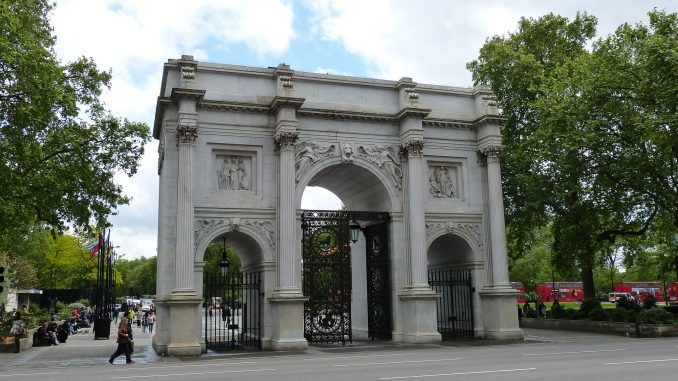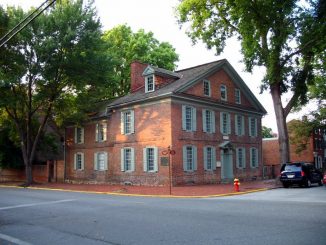
Designed in 1827 by famed architect John Nash as the state entrance to the cour d’honneur of Buckingham Palace, the Marble Arch is one of the most fittingly named roadside attractions in the world. Literally an arch made of white marble, it was historically only members of the royal family, the King’s Troop, and the Royal Horse Artillery that were allowed to pass through the arch. Today anybody may pass through the arch as often as they like.
King George IV commissioned a large equestrian statue of himself in 1829 with the intention of placing it atop the central arch but for reasons unknown the statue was never installed. It can me found on a plinth at Trafalgar Square if you are interested in statues of kings on horses.
The Marble Arch was relocated in 1851 to its current location and following the widening of Park Lane now sits on what seems to be a large traffic island. It is often said that the arch was moved because its central arch is too small for modern cars to pass but there is good evidence that Queen Victoria requested the move to provide room for expansions of Buckingham Palace.
Marble Arch Facts
- In 1851 the arch was moved to its current site at the northeast corner of Hyde Park.
- Nash modeled Marble Arch on Rome’s Arch of Constantine, built in the fourth century.
- The top of the arch is decorated with sculpted relief panels that represent England, Scotland, and Ireland.
- The London Underground station Marble Arch is named after the actual Marble Arch located nearby.
- The Marble Arch is made of Carrara marble. Carrara marble is famed because it was Michelangelo’s favorite.
- In 1571, the Tyburn Tree, a type of gallows where several felons could be hanged at once was erected near the Marble Arch’s current location.
- The name Marble Arch is commonly used to refer to the area around the arch in West London.


